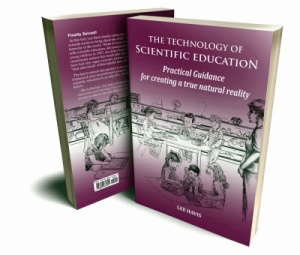|
The Technology of Scientific Education Practical Guidance for Creating a True Natural Reality Publ 2023 Author: Lee Havis, IMS executive director and founder Although this breakthrough “Technology of Scientific Education” was essentially completed in 2003, it has taken until 2023 to fully validate its use in actual practice, and to consolidate it into one single complete text. Before now, this specialized technology has only been available through IMS in various summary and fragmented forms, such as IMS writings, webinars, and training programs on the subject. Practitioners in the field and others familiar with Dr. Montessori’s “new education” will especially appreciate the clarity it brings to Montessori’s writings on the subject, which is now widely known as the “Montessori method”. |
|
What is Scientific Education? In the early 1800’s, the French physician, Dr. Gaspard Itard coined the term “scientific education” to describe his approach of observing a child in a free state of his self-directed development. Later, his colleague, Dr. Eduard Seguin, a fellow physician, extended the use of this approach by creating self-teaching materials for his own scientific teaching with mentally deficient children. In 1907, Dr. Montessori, an Italian physician, extended her own research with this “scientific education” by applying it to ordinary preschool aged children. With these children, she discovered that this approach somehow brought about amazing changes in the young child towards a stable state of perfect peace, order, and harmony, which she eventually realized was their true nature. Until now, however, the exact manner of conducting this “scientific education” was incomplete, in the “mist and clouds”, relying on the practitioner’s own instinct and intuition. Now, however, a new, specialized technology has emerged in this field to transform the mysterious Montessori “method” into a truly complete, scientific process that anyone can learn and apply with children. What is the “Technology”? The Technology of Scientific Education is a unique, specialized set of practical tools and guidance for conducting objective experiments with children to bring about their true natural being. Using this technology, you can now conduct the same experiment that led to Dr. Montessori’s discovery of the child’s true nature in 1907, except now in an objective, conscious manner that was never possible before. The technology itself consists of 10 specific techniques, 20 protocols, 3 lesson presentations and various safe words. The techniques are the basic things to do and actions to take in conducting your experiments. The protocols and safe words regulate and control your use of the techniques in this process. The lesson presentations are the experimental interactions you conduct by combining the techniques and protocols together in a meaningful combinations. All this is described and presented in this new 400 page text on the subject. |
Chapters Chapter 1, Introduction, provides the basic premise of scientific education to bring about the child’s true nature; and the use of technology for scientific teaching within a unique individual child framework. Chapter 2, Analytical Framework, explains how to use the technology within the individual child framework described in Chapter 1. Chapter 3, Scientific Teaching Techniques, describes each of the ten distinct ‘techniques” of the technology. These techniques are things to do in conducting scientific teaching. Chapter 4, Protocols and Safe Words, describes each of the twenty “protocols” that guide your use of the techniques. In this chapter, “Safe Words” to control language with children are also included. Chapter 5, Applying the Techniques, presents specific practical examples to show how applying the techniques would work in a typical classroom situation. Chapter 6, Polishing the Environment, describes how using the technology, from heavy to light, is a variable, experimental process over time. Chapter 7, Lesson Presentations, describes how techniques and protocols combine together in various experimental interactions. This chapter also shows how the technology is employed in presenting “self-teaching” materials to children. Chapter 8, Specific Adaptations, shows how the technology is adapted for use in various situations, such as early childhood, elementary level, home-schooling, and with poor, working children (project: Character Teaching). Chapter 9, Practical Applications, presents a variety of specific common problem situations to solve with the technology. A number of model solutions to these problems are also included in the book’s appendix. Chapter 10, Challenges to Completion, provides solutions to a wide range of common obstacles that arise in using the technology. Included also is the “bigger picture” of scientific education, which relates to using the technology to ultimately bring about a new humanity of true natural peace, order, and harmony in the world. |

